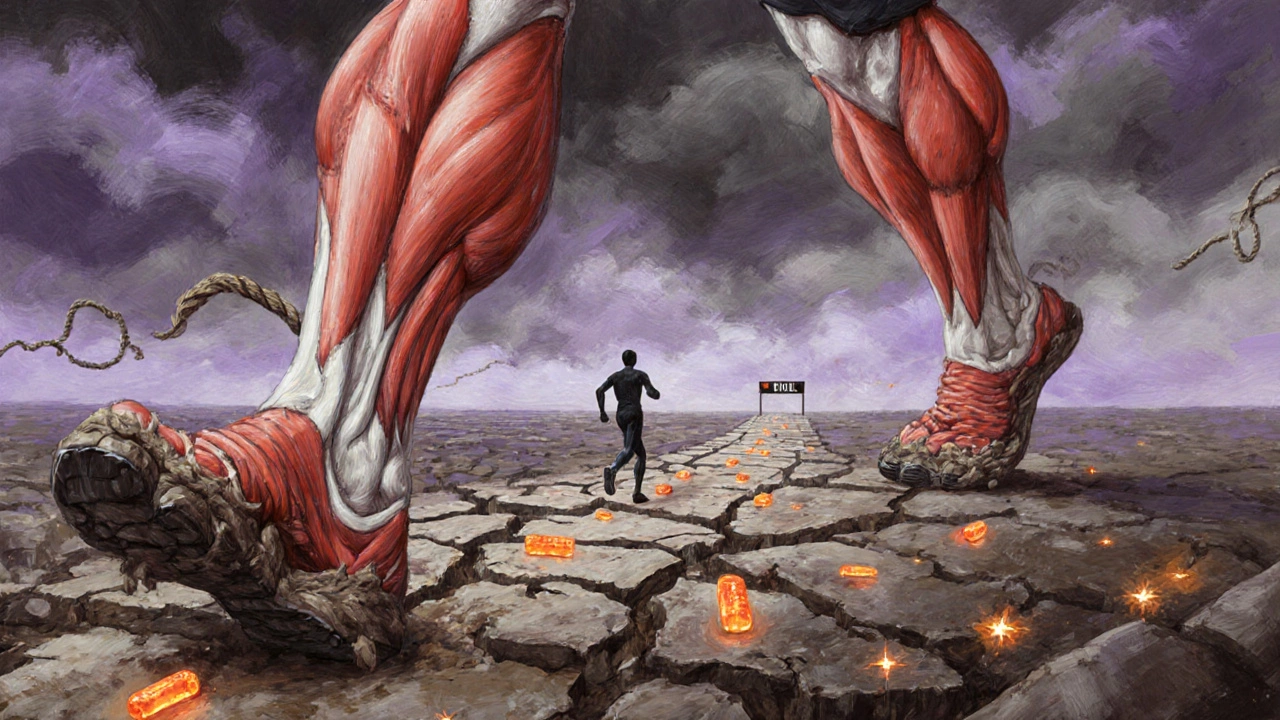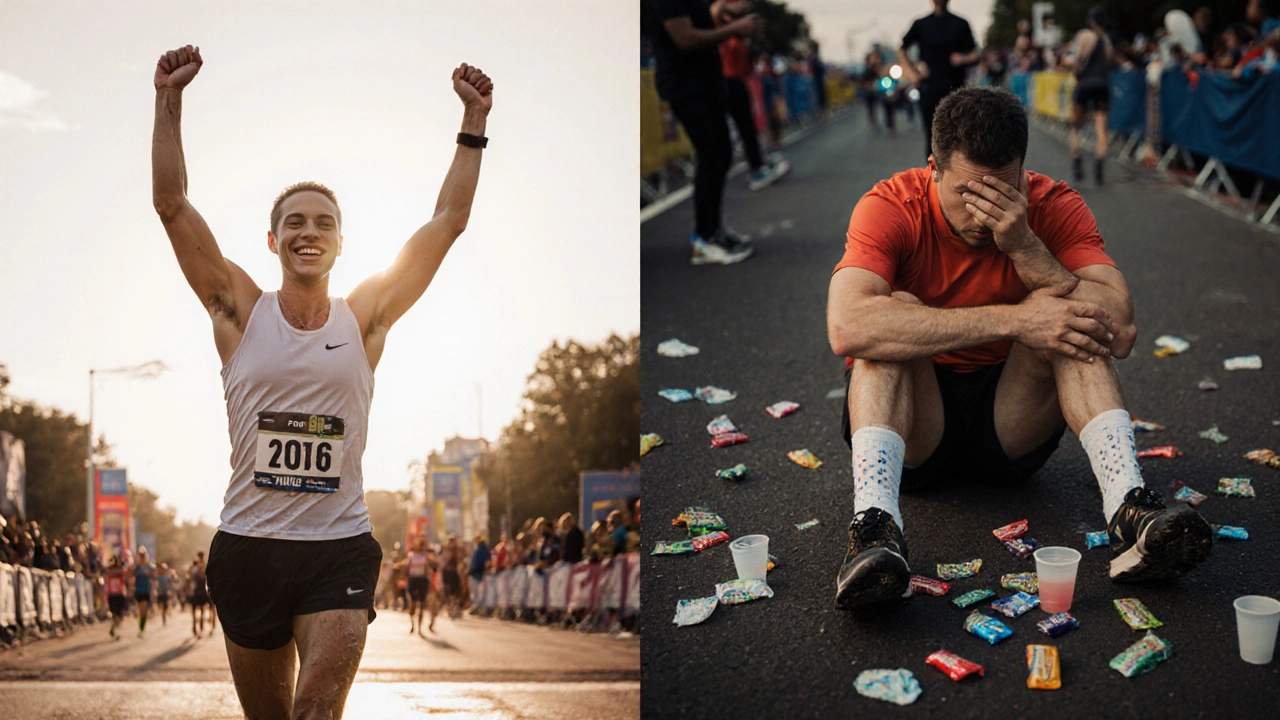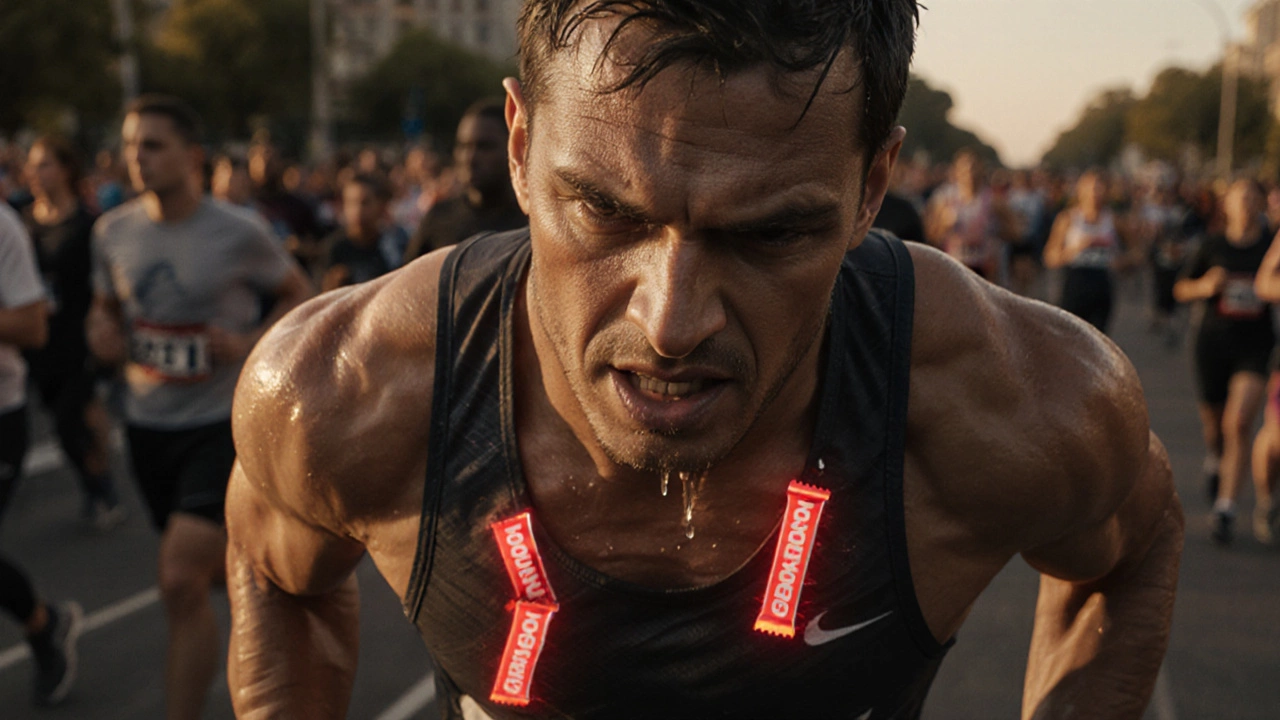Marathon Fueling Calculator
Carbohydrate Needs:
Warning: You're at high risk of hitting the wall.
Your fueling plan may not sustain you past mile 18.
Fueling Strategy:
- Consume grams of carbs per hour
- Practice this on your long runs
- Start fueling by mile 12-14
Run a half marathon and you might feel tired, proud, maybe even invincible. Run a full marathon and you could be questioning every decision that led you to the starting line. It’s not just twice as hard-it’s exponentially harder. And if you’ve ever hit the wall at mile 20, you already know why.
The Math Doesn’t Add Up
At first glance, a marathon is just double the distance of a half marathon: 26.2 miles versus 13.1. But your body doesn’t see it that way. It doesn’t think in linear terms. It thinks in energy systems, muscle fatigue, and mental resilience. By the time you hit mile 13, your glycogen stores are already running low. By mile 20, they’re nearly empty. Your body switches from burning sugar to burning fat, which is slower, less efficient, and forces your pace to drop-sometimes dramatically.
Studies show that most runners slow down by 15-20% in the second half of a marathon, even if they started strong. In a half marathon, that slowdown rarely happens. You can push hard from start to finish and still feel like you’ve got something left. In a marathon, you’re racing against your own physiology.
It’s Not Just Distance-It’s Time
A half marathon takes most people between 1 hour 30 minutes and 2 hours 15 minutes. A full marathon? 3.5 to 5.5 hours, depending on fitness. That’s a huge jump in time spent under physical stress. Your joints, muscles, and connective tissues don’t just get tired-they start breaking down. Tendons get inflamed. Feet swell. Hips tighten. Your stride changes. You start limping, not because you’re weak, but because your body is literally trying to protect itself.
And then there’s the mental toll. Running for four hours straight means dealing with boredom, doubt, pain, and the constant whisper: Why are you doing this? In a half marathon, you can distract yourself with music, crowds, or the finish line being just around the corner. In a marathon, that finish line feels like it’s moving away.
The Wall Isn’t a Metaphor-It’s Biology
Every runner hears about ‘hitting the wall.’ It’s not just a phrase. It’s a real, measurable drop in performance caused by depleted glycogen. Your liver and muscles store about 1,800-2,000 calories of glycogen. A marathon burns around 2,600-3,200 calories for most people. That’s a deficit of 800-1,400 calories. Even with gels and sports drinks, you can’t fully replace what you’re using.
That’s why marathoners who don’t train for fueling often crash hard. You might feel fine at mile 18, then suddenly your legs turn to concrete. Your brain tells you to stop. Your body says it can’t go on. This doesn’t happen in a half marathon because you don’t burn through your fuel stores fast enough to trigger a full system shutdown.

Training Doesn’t Prepare You for the Full Picture
Most runners think logging a 20-mile long run is enough to prepare for 26.2. It’s not. A 20-mile run is about 76% of a marathon. You’re still leaving 24% of the challenge untrained. That final stretch? It’s where your body has never been. No amount of speed work or hill repeats will fully simulate what happens when your legs are numb, your stomach is queasy, and your mind is screaming to quit.
Real marathon training means practicing fueling on the run, testing your gear for 4+ hours, walking through aid stations without losing rhythm, and learning how to run when you’re already broken. Half marathoners can get away with minimal fueling and basic gear. Marathoners can’t. One missed gel at mile 18 can ruin your race. One chafed nipple can make you cry. One wrong pair of socks can end your day.
The Mental Game Changes Completely
In a half marathon, you can think about crossing the finish line. In a marathon, you have to break it down into tiny pieces: Just get to the next water station. Just make it to mile 22. Just put one foot in front of the other. You stop thinking about the finish. You stop thinking about time. You just survive.
Neuroscience shows that prolonged physical stress reduces activity in the prefrontal cortex-the part of your brain that makes rational decisions. That’s why marathoners do irrational things: they stop to stretch in the middle of the road, they cry at strangers, they beg for water they don’t need. Your brain isn’t in charge anymore. Your body is.
Half marathoners might feel emotional at the end. Marathoners often feel nothing until they collapse into a chair and realize they just did something most people will never even try.

Recovery Is a Whole Other Battle
After a half marathon, you might take a day off, stretch a little, and feel fine by the next day. After a marathon? Recovery isn’t a day-it’s a process. Muscle soreness lasts 5-7 days. Swelling can linger for two weeks. Your immune system is suppressed. You’re more prone to colds, infections, and even injuries from overuse.
Most runners who finish a marathon don’t run again for 2-4 weeks. Some take a month off. Half marathoners often run again in 3-5 days. The difference isn’t just physical-it’s psychological. You don’t just need time to heal your legs. You need time to heal your mind.
Why So Many Quit
Marathon finish rates hover around 85-90% for experienced runners. But for first-timers? It drops to 70% or lower. Why? Because they don’t realize how much harder it is. They think, I ran 13 miles, I can do 26. They don’t account for the compounding fatigue, the mental erosion, the fueling mistakes, the gear failures.
It’s not about being weak. It’s about underestimating the distance. The marathon doesn’t care how fit you are. It only cares how prepared you are for 26.2 miles of relentless physical and mental demand.
What You Can Do About It
If you’re training for a marathon, stop thinking of it as two half marathons. Think of it as a completely different sport. Train for endurance, not speed. Practice eating while running. Test every piece of gear on long runs. Learn to walk through aid stations. Accept that you’ll slow down. Accept that you’ll feel awful at some point. And accept that the only way to beat the wall is to train your body to run through it-even when you think you can’t.
And if you’ve already run a marathon? You already know the truth. It’s not just longer. It’s harder in ways you can’t predict. That’s why finishing one feels like winning a war.
Why do I feel worse after a marathon than after a half marathon?
You feel worse because a marathon burns through nearly all your body’s stored energy, causes prolonged muscle breakdown, and pushes your nervous system into overdrive. Recovery isn’t just about sore muscles-it’s about repairing tissue, restoring immune function, and resetting your mental state, which takes days or weeks.
Can I train for a marathon by just doubling my half marathon training?
No. Doubling your mileage doesn’t double your readiness. Marathon training requires longer runs (up to 20-22 miles), fueling practice, gear testing, and mental conditioning for sustained discomfort. You need to simulate the full race experience, not just the distance.
Is it possible to run a marathon without hitting the wall?
Yes, but only if you train properly. That means practicing fueling every 45-60 minutes during long runs, building your fat-burning efficiency through slower long runs, and pacing yourself conservatively in the first half. Most people hit the wall because they start too fast and skip fueling.
Why do marathoners walk during races?
Walking helps conserve energy, reduce muscle damage, and manage hydration. Many experienced runners use walk breaks-especially at aid stations-to avoid burning out too early. It’s not a sign of weakness; it’s a strategy. Even elite runners sometimes walk briefly during ultra-marathons.
How long should I rest after a marathon before running again?
Most runners need 2-4 weeks before returning to regular running. Light walking or swimming can start after 3-5 days, but hard running should wait until soreness and swelling are gone. Rushing back increases injury risk and delays full recovery.
